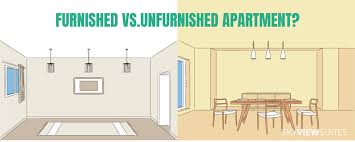By Team hovee Rent
August 11, 2025 · 5 min read
Co-living spaces are changing the way people think about renting. Instead of living alone or with a traditional roommate, co-living offers fully furnished private rooms alongside shared kitchens, lounges, and amenities often in a vibrant, community-driven environment. Popular among students, young professionals, and remote workers, these spaces promise affordability, convenience, and a built-in social circle.
To help you decide if it’s the right choice for you, let’s explore the pros and cons in detail.
Pros of Co Living Spaces :

Co-living spaces come with a variety of advantages that appeal to today’s fast-paced, community-focused lifestyles. From reducing living costs to offering fully furnished homes with shared amenities, they provide convenience, flexibility, and a ready-made social network.
These benefits make co-living an attractive option for students, young professionals, and anyone seeking a balance between affordability and community living.
1) Affordability :
Rent is a significant monthly expense, especially for individuals under the age of 30, often consuming around 45% of their income. However, co-living presents an excellent solution by offering affordable living arrangements. By opting for a Co-living you can significantly reduce your monthly expenses.
Sharing the rent with roommates allows for a more affordable living situation compared to renting an entire apartment.
2) Flexibility :
If you’re not ready for a long-term commitment, Co-living Spaces offers the perfect solution. This attracts individuals from all walks of life, including students, young professionals, and digital nomads.
With the option of short-term leases, these co-living spaces provide the flexibility you need to adapt to your evolving circumstances, whether it’s a temporary stay or a longer-term commitment.
3) Social Benefits :
Co-living provides numerous social benefits, including connecting with people from different backgrounds and cultures, developing new friendships, and collaborating on shared interests or projects.
Co-living spaces often organize social events, such as movie nights, game nights, or group outings, which foster a sense of community and encourage social interaction.
This type of housing is particularly attractive to people who value socializing and networking and can lead to friendships and professional connections that extend beyond the co-living experience.
4) Built-in Community :
Building new friendships and connections as an adult can be daunting, particularly when relocating to a new city or balancing a busy work schedule. Loneliness has become a prevalent issue, especially among millennials. However, coliving provides a solution by offering a vibrant and built-in community of like-minded individuals.
Within a coliving space, shared meals, movie nights, and engaging conversations become natural and effortless. Say goodbye to the challenges of making friends as an adult and embrace the enriching experience of coliving.
Cons of Co Living Spaces :

While co-living offers many benefits, it also comes with its share of challenges. Sharing spaces with others can sometimes lead to privacy issues, lifestyle clashes, and limited personal control over your environment. These drawbacks may make co-living less suitable for those who value solitude, independence, or a highly personalized living space.
1) Limited Privacy :
One of the most significant drawbacks of co-living is the reduced level of privacy. While shared living offers social interaction and community, it also means your personal space is limited. Co-living properties often have multiple residents coming and going at different times, meaning there’s a higher chance of disturbances.
Ultimately, the impact of limited privacy depends on your lifestyle and personality. If you’re extroverted and enjoy constant interaction, you might not mind the trade-off. But if you value solitude, quiet spaces, and full control over your environment, the lack of privacy in co-living arrangements can become mentally and emotionally draining over the long term.
2) Potential Conflicts :
Sharing a living space with multiple people from different backgrounds can sometimes lead to disagreements and misunderstandings.
Lifestyle differences such as sleeping schedules, work hours, or noise tolerance can cause tension. Cleanliness standards often vary; what one person considers “tidy” may feel messy to another. Disagreements over shared expenses, such as groceries or cleaning supplies, can strain relationships. Hosting guests without informing housemates can create discomfort.
Cultural differences might lead to misunderstandings in daily habits or communication styles. If someone fails to follow agreed house rules, frustration can build up quickly. Without clear communication channels, minor issues can escalate into major disputes.
3) Lack in Cities :
Coliving spaces may not be available in all cities or areas, such as smaller towns or rural areas. This limits the options for individuals interested in coliving arrangements but cannot relocate to a city or urban area.
Additionally, the availability of coliving spaces may be limited in some cities, leading to higher prices or longer waitlists for desirable living arrangements.
Final Thoughts :
Co-living spaces are redefining modern living by blending affordability, convenience, and community in a way that traditional rentals often can’t match. They can be a great choice for those who value social connections, flexibility, and a hassle-free lifestyle. However, they may not suit everyone, especially those who prioritize privacy, personal space, or complete control over their living environment.
Ultimately, the decision comes down to your lifestyle, budget, and personal preferences. If you thrive in a shared, collaborative atmosphere and enjoy the idea of living with a built-in community, co-living could be the perfect fit. But if solitude and independence are non-negotiable for you, a private rental might be the better option.
Happy Renting !!!
Ready to find your perfect space?
Check out the latest listings on www.hoveerent.com or download the app to begin your search.

 Tenant
Tenant
 Owner
Owner




